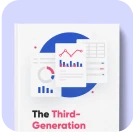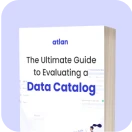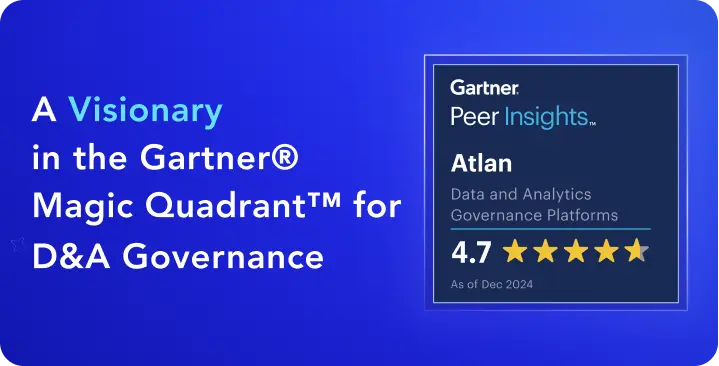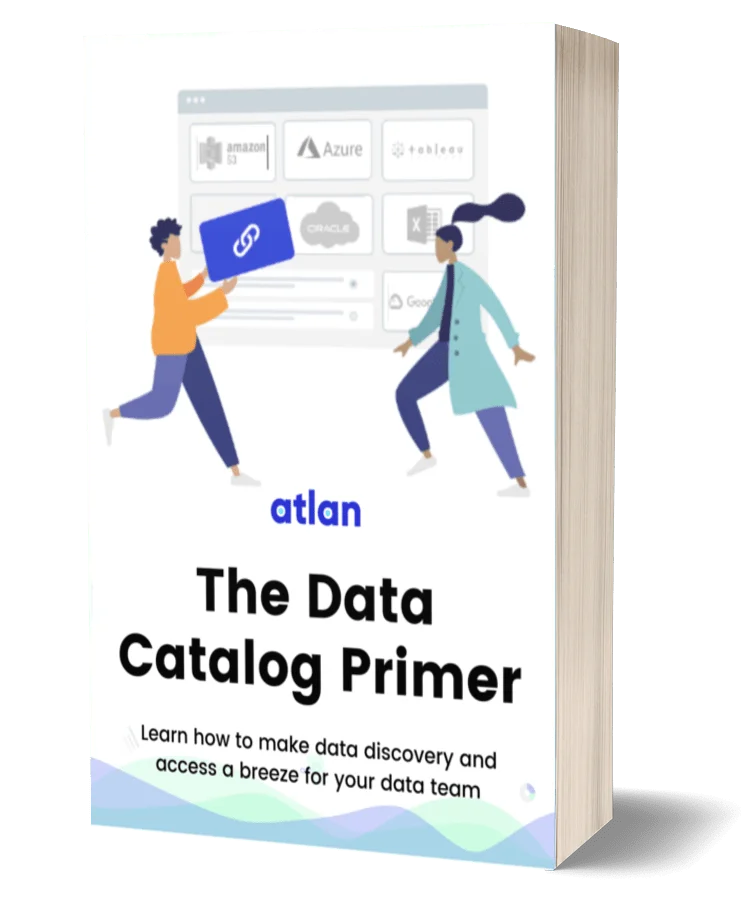Data as an Asset: Realizing the Economic Potential of Data

Share this article
According to a NewVantage partners survey from 2019, 46.9% of the surveyed big data executives were leveraging data as an asset. That was before the pandemic-induced accelerated digitization.
Becoming a data-driven organization and leveraging the full potential of data and analytics requires organizations to put data at the center of business operations.
This article explores how treating data as an asset can help organizations extract financial value from data.
How is data an asset? #
Let’s start by defining an asset. According to the CFI:
"An asset is a resource controlled by the enterprise as a result of past events and from which future economic benefits are expected to flow to the enterprise.”
In the above context, assets are financial in nature and can be tangible or intangible. Examples of tangible assets include cash, stocks, bonds, and inventory. In comparison, patents can be treated as intangible assets.
Data fits into this definition perfectly.
Here’s why. According to data scientist Adam Votava, organizations can use data for:
- Making better decisions
- Enabling greater operational efficiency
- Discovering new revenue streams
Each of the above actions directly impacts a company’s P&L and, thus, its value.
Bill Schmarzo, the Data Science and Data Monetization Strategic Advisor at the Dean of Big Data, states that:
“Data is an economic asset that never depletes or wears out and can be used across unlimited use cases at zero marginal cost. Data is the new sun — it never depletes and keeps going. Moreover, you can use data to build analytics that appreciates in value, not depreciate, the more they’re used.”
When you treat data as an organizational asset and invest in it, the ROI can be exponential.
Examples of data as an asset #
Let’s look at two examples — American Airlines and LinkedIn — where data as an asset was worth more than the market value of each organization.
In 2020, analysts valued the frequent flyer programs of American Airlines at USD 18-30 billion, eclipsing the company’s 2021 market capitalization of USD 12.9 billion. As a result, the company raised USD 30 billion using the frequent-flyer scheme as collateral.
According to The Economist:
“The pandemic saw the first use of loyalty programs as collateral in the United States. United was the first to do so with a secured loan in June 2020. Delta followed with a bond offering soon after.”
When data can be used as collateral to secure massive loans, it’s a precious financial asset.
Another example is the Microsoft acquisition of LinkedIn. Dries Buytaert, the Founder and Project Lead at Drupal observed that when Microsoft bought LinkedIn for USD 26 billion, it paid more than $60 per registered LinkedIn user (at the time of acquisition circa 2016).
The deal is symbolic because it outlines how Microsoft shifted its perspective on data and considers it an essential business strategy.
According to Buytaert, Microsoft gained immediate access to data from over 433 million LinkedIn members (a 2016 statistic). Leveraging this data, Microsoft could gain a competitive advantage in its business offerings against other tech giants such as Amazon, Salesforce, Google, and Apple.
Is data a balance sheet asset? #
Data is a unique economic asset that can consistently deliver business value. You can view data as a balance sheet asset, but you shouldn’t restrict yourself to this accounting perspective.
Bill Schmarzo asserts that organizations should look at data as an economic asset that generates new sources of customer product and operational value.
Before proceeding further, let’s explore the differences between data assets and data “as an asset” — a common ground for confusion.
Data assets vs. data as an asset #
According to NIST, a data asset is an entity made up of data. Data assets are the fundamental units in metadata management. Examples of data assets include databases. dashboards, notebooks, etc comprised of data records and websites that provide data in response to queries (like weather forecasting websites).
Meanwhile, data “as an asset” is when you assign economic value to your data assets. That’s where the two concepts are connected. To treat data as an asset, you must correctly identify, understand, and manage your data assets.
Here’s a quick comparison guide to help you out.
| Data asset | Data as an asset | |
|---|---|---|
| What is it? | Data assets are tangible elements or entities made up of data. | Data as an asset implies treating data as a strategic or economic investment. |
| Example | Databases, Documents, Digital applications, System logs, Websites | Search engines like Google that use data as a business strategy, Airlines (American Airlines and Delta) that use data as collateral to secure loans |
| Application | Data assets provide the humans of data with adequate context to understand, interpret, and use data. | When you treat data as an asset, you can use it in corporate valuation, as a business strategy, or for securing funds. |
Why is it important to treat data as an asset? #
According to the CPA Journal, the official publication of the New York Society of CPAs, data is an economic asset that can help organizations:
- Improve operations
- Increase revenue
- Solidify relationships with stakeholders
- Produce new revenue streams
- Improve the quality of current products
- Establish competitive differentiation
- Allow innovation
- Reduce risks
Let’s look at some of the top benefits of treating data as an asset for data teams and data-driven organizations:
1. Raising capital #
As mentioned in the previous example of airlines in the US, data as an asset can help raise capital. The airlines monetized data — frequent flyer programs — to keep them afloat during the pandemic.
Similarly, you can use data as an asset to raise funds and identify new revenue streams. You can also use it, just like cash, to buy other assets that increase your overall business value.
Amazon CTO, Werner Vogels, claims that “data is at the core of value creation, whereas physical assets are losing their significance in business models.”
2. Better data management #
Douglas B. Laney, Data & Analytics Strategy Innovation Fellow at West Monroe, observes that:
“A failure to quantify the actual and potential value of your company’s data can lead to complacency in the way it is governed, integrated, transformed, and made accessible. And this, in turn, results in a diminished ability to generate economic benefits from the data.”
So, treating data as an asset is essential to ensure good data management and governance, which is critical for extracting business value from data.
3. Better accountability from data teams #
Data as an asset also acts as a form of accountability for data teams. When you tie your economic worth to data, it incentivizes your stakeholders to use data as effectively as possible.
Overall, enterprise data asset management lends a greater accuracy to decision-making, boosts operational efficiency and productivity, and optimizes the use of your resources.
4. Ensure easy buy-in from executives #
When data has a monetary value attached, it becomes easier to assess the ROI of data teams. It provides the management with complete visibility into the work of data teams and its direct impact on the company balance sheet.
So, Chief Data Officers can present concrete numbers to the executive board and get their buy-in for more data-centric initiatives.
Realizing the economic value of data #
According to the OECD toolkit,
“Data can refer to an organization’s entire business model. For example, companies in the private weather forecasting industry (valued at USD 7 billion) might be said to be in the business of providing data to their clients. These firms won’t exist without data.”
The toolkit also highlights the socio-economic role of data.
Besides helping businesses with profitability and market valuation, data can contribute to social welfare.
Public and non-profit organizations are also using data to optimize costs and efficiency. In addition, they’re embracing data to find data-driven solutions to societal challenges related to health, basic human needs, and quality of life.
So, data is central to “creating, accessing, disrupting, increasing, and shaping markets, maximizing economic value generation, and making informed policy decisions.”
Having understood the economic value of data, the next step is to delve into the specifics of managing data as an asset.
Managing data “as an asset” #
The OECD toolkit also explores the practical challenges in valuing data.
For instance, few data types have well-defined standards and widely accepted valuations. There’s also no universal standard for categorizing data into types and using it for statistics and analytics.
The lack of commonly accepted standards makes it harder to assign value to data. That’s why OECD recommends an indirect way of valuation:
You can evaluate the effort and resources involved in gathering, storing, maintaining, analyzing, and transferring data.
KPMG goes a step further and chalks out a five-step process that can help you assign an accurate value to your data:
- Create a data asset register, including key data domains and entities.
- Perform a high-level review of data quality across all data domains.
- Assign notional book values — a framework to assign business value and quality scores to data assets. This helps you determine the economic value of data as an asset.
- Collaborate with the business to set up a roadmap of data initiatives guided by notional book values.
- Establish a process to refine and periodically re-assess the notional book values.
Before assessing the quality or identifying the business value, it’s important to gain end-to-end visibility into collecting, storing, and using your data assets.
That’s where metadata management, and more specifically DataOps, plays a vital role.
The role of metadata management and DataOps in assigning value to data assets #
Metadata management is the “practice of cleaning, classifying, and organizing data to ensure its accuracy, integrity, and consistency.”
The metadata includes active metadata — data that defines a data asset, plus data about everything that happens to the asset. So, it’s operational, business, and social metadata and technical metadata.
Effective active metadata management requires efficient data processes. These processes must contribute to your business outcomes to allocate value to data.
To know more about setting up such processes, check out our ultimate guide on building a business case for DataOps
Share this article












